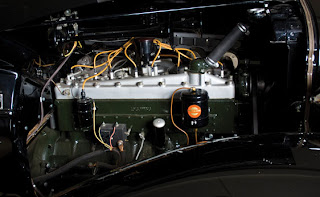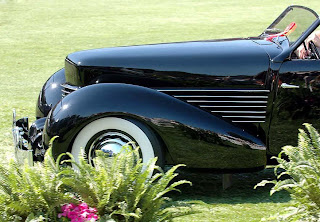Rambler
The first use of the name Rambler for an American made automobile dates to 1897 when Thomas B. Jeffery of Chicago, Illinois and builder of the Rambler bicycle, constructed his first prototype automobile.
After receiving positive reviews at the 1899 Chicago International Exhibition & Tournament and the first National Automobile Show in New York City, Jeffery decided to enter the automobile business. In 1900, he bought the old Sterling Bicycle Co. factory in Kenosha, Wisconsin, and set up shop.
Jeffery started commercially mass-producing automobiles in 1902 and by the end of the year had produced 1,500 motorcars, one-sixth of all existing in the USA at the time. The Thomas B. Jeffery Company was the second largest auto manufacturer at that time, (behind Oldsmobile).
The car received good reviews over the next few years and this made Thomas Jeffery to exit the bi-cycle business and enter automobile business. In 1900, Thomas Jeffery sold off his holdings in the G&J manufacturing company to the American Bi-cycle company and invested in Thomas B Jeffery company to manufacture automobiles. Along with his son Charles Jeffery , Rambler cars became famous and sought after. A 1902 Rambler -
During the initial years , the Rambler cars were sold by John Willys , as a distributor.
After the sudden death of Thomas Jeffery during 1910 , Charles Jeffery took over control of the company. In 1914 , Charles Jeffery renamed the Rambler brand as Jeffery in memory of his father (reverted back to Rambler later). Rambler also expanded in to the manufacture of Trucks with 4 wheel drive and 4 wheel steering and was used extensively during the World War I. A 1918 Rambler Quad ( Nash)
In 1916, Charles Jeffery sold his company to Charles Nash of Nash Motors. Nash Motors continued to make cars and trucks under the Rambler as well as Nash brands. 1937, Nash Motors merged with appliance manufacturer , Kelvinator to form Nash-Kelvinator.
By 1954, Nash-Kelvinator and Hudson Motor co merged to form American Motor Corporation and Nash and Rambler brands continued to exist along with AMC. By 1966 - 68 , the Rambler brand was slowly dropped and then disappeared.
American Motor Corporation, after a brief alliance with Renault , was taken over by Chrysler corporation in 1987.
Rambler brand cars:
Historic
1- Rambler: 1901 – 1917
Compact
Nash Rambler: 1950 – 1955
Rambler American 1958 – 1969
Mid-sized
Rambler Six and V8: 1956 – 1960
Rambler Rebel: 1957 – 1960
Rambler Ambassador: 1957 – 1965
Rambler Classic: 1961 – 1966
Rambler Rebel: 1967
Rambler Marlin: 1965
Show cars
Rambler Palm Beach: 1950
Rambler Tarpon: 1964
International
Australian Motor Industries 1960 – 1978
Starting in 1960, AMI assembled a broad range of AMC cars, all with right-hand drive and carried the Rambler brand name. This meant that Australians could purchase a Rambler Javelin, AMX (a total of 24 were assembled, all with 343 cu in (5.6 L) V8s[6]), Hornet, or Matador long after the Rambler marque was dropped from use on the equivalent U.S.-made models.
Complete knock down kits were shipped from AMC's Kenosha, Wisconsin facility (all knock-down kits to all assembly operations were from Kenosha), but the Australian cars were assembled with a percentage of "local content" to gain tariff concessions. This was done using parts and components (such as seats, carpet, lights, and heaters) from local Australian suppliers. AMI specified what parts were not to be included in the unassembled kits sent by AMC. The door tag on an AMI assembled car has no trim number because AMC did not know in advance how it would be trimmed inside. The color selection was limited in Australia because the bodies were painted at the body plant just like all the bodies going for final assembly at the Kenosha factory. Specific colors had to be ordered by AMI in advance and there was only had a limited supply of each in Australia. The body had the engine, trans, front suspension, and rear axle installed (as well as a few other parts such as door latches), and then was pulled from the line in Kenosha, Wisconsin. Other necessary parts specified by the assembler were boxed and shipped inside the car for assembly at the final destination in Australia. It is unknown exactly how many parts were included to be installed by the assembly operation, that varied with each operation.
1969 AMC AMX assembled by AMI
A total of 24 AMC AMXs, all 1969 models were made by AMI between August, 1969 and July, 1970. Differences to the RHD two-seater AMXs compared to the U.S. models included swapping the power brake booster and heater motor on the firewall, the power steering pump remained in its usual left location, although the rest of the steering components had to be on the right side of the cars. All of the Australian AMX interiors were finished in black featuring a unique RHD dashboard with a wood-grained instrument cluster in front of the driver. While the AMX was marketed as a performance car in the U.S. marketplace, the Australian AMXs came with a large high level of equipment that was optional in the U.S., and these AMXs were advertised as personal luxury cars.
One AMC Gremlin was also assembled AMI in Port Melbourne for evaluation purposes and branded as a "Rambler Gremlin". The car features the standard 232 cu in (3.8 L) I6 with three-speed manual transmission, as well as right-hand drive and the mandated percentage of locally produced content.
From 1971, Australian assembled AMC Matadors were equipped with standard column shift automatic transmissions, power steering, power windows, air conditioning, and an AM radio. The engine in the later years was AMC's 360 cu in (5.9 L) V8. Options included exterior sunvisor, vinyl roof cover, tow hitch, and mud flaps. Registrations for AMC vehicles dropped after 1974. A total of 118 Hornets and 145 Matadors (118 sedans, 27 wagons) were sold during 1974. Registrations for 1975 were 136 Hornets and 118 Matadors (85 sedans 33 wagons). In 1976 there were 88 Matadors (78 sedans, 10 wagons), while 1977 saw just 24 Matador sedans and 3 wagons. Additionally, Matador coupe CKD kits arrived in late-1974, and the assembly of 80 cars began in 1976. One fully assembled AMC Pacer was imported for evaluation purposes.
Complete knock down kits were shipped from AMC's Kenosha, Wisconsin facility (all knock-down kits to all assembly operations were from Kenosha), but the Australian cars were assembled with a percentage of "local content" to gain tariff concessions. This was done using parts and components (such as seats, carpet, lights, and heaters) from local Australian suppliers. AMI specified what parts were not to be included in the unassembled kits sent by AMC. The door tag on an AMI assembled car has no trim number because AMC did not know in advance how it would be trimmed inside. The color selection was limited in Australia because the bodies were painted at the body plant just like all the bodies going for final assembly at the Kenosha factory. Specific colors had to be ordered by AMI in advance and there was only had a limited supply of each in Australia. The body had the engine, trans, front suspension, and rear axle installed (as well as a few other parts such as door latches), and then was pulled from the line in Kenosha, Wisconsin. Other necessary parts specified by the assembler were boxed and shipped inside the car for assembly at the final destination in Australia. It is unknown exactly how many parts were included to be installed by the assembly operation, that varied with each operation.
1969 AMC AMX assembled by AMI
A total of 24 AMC AMXs, all 1969 models were made by AMI between August, 1969 and July, 1970. Differences to the RHD two-seater AMXs compared to the U.S. models included swapping the power brake booster and heater motor on the firewall, the power steering pump remained in its usual left location, although the rest of the steering components had to be on the right side of the cars. All of the Australian AMX interiors were finished in black featuring a unique RHD dashboard with a wood-grained instrument cluster in front of the driver. While the AMX was marketed as a performance car in the U.S. marketplace, the Australian AMXs came with a large high level of equipment that was optional in the U.S., and these AMXs were advertised as personal luxury cars.
One AMC Gremlin was also assembled AMI in Port Melbourne for evaluation purposes and branded as a "Rambler Gremlin". The car features the standard 232 cu in (3.8 L) I6 with three-speed manual transmission, as well as right-hand drive and the mandated percentage of locally produced content.
From 1971, Australian assembled AMC Matadors were equipped with standard column shift automatic transmissions, power steering, power windows, air conditioning, and an AM radio. The engine in the later years was AMC's 360 cu in (5.9 L) V8. Options included exterior sunvisor, vinyl roof cover, tow hitch, and mud flaps. Registrations for AMC vehicles dropped after 1974. A total of 118 Hornets and 145 Matadors (118 sedans, 27 wagons) were sold during 1974. Registrations for 1975 were 136 Hornets and 118 Matadors (85 sedans 33 wagons). In 1976 there were 88 Matadors (78 sedans, 10 wagons), while 1977 saw just 24 Matador sedans and 3 wagons. Additionally, Matador coupe CKD kits arrived in late-1974, and the assembly of 80 cars began in 1976. One fully assembled AMC Pacer was imported for evaluation purposes.
American Motors cars were assembled in Port Melbourne by AMI up to 1978. The company retained a niche market as the sole U.S. sourced cars available in the Australian marketplace. For example, the Government of New South Wales selected the Rambler Rebel and the Matador as official vehicles in the 1970s.
Constructora Venezolana de Vehículos: 1968 – 1974
Industrias Kaiser Argentina: 1962 – 1972
Vehículos Automotores Mexicanos: 1963 – 1983
























































































